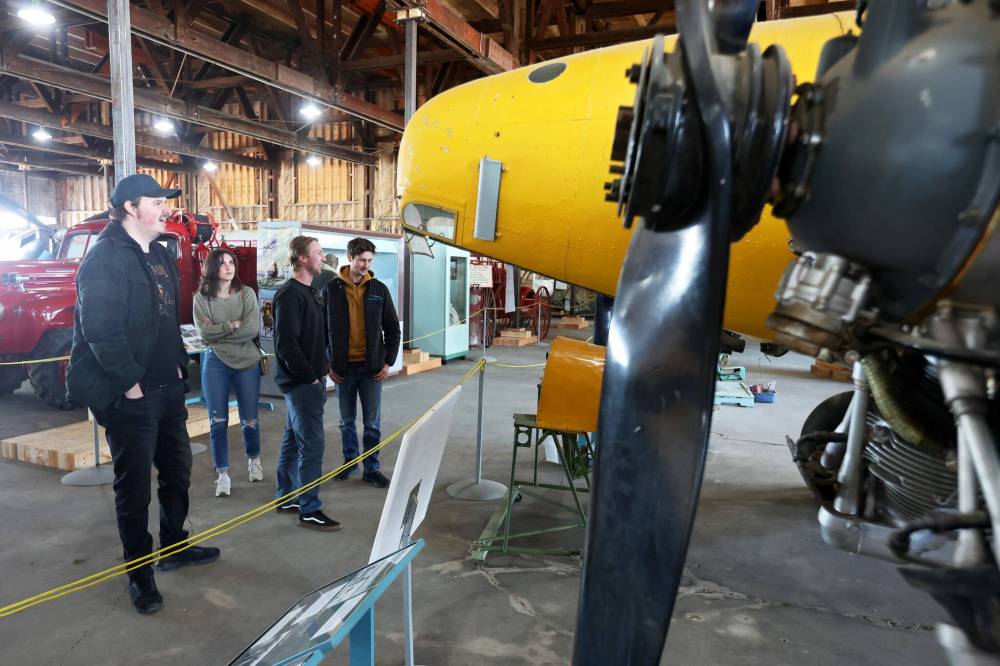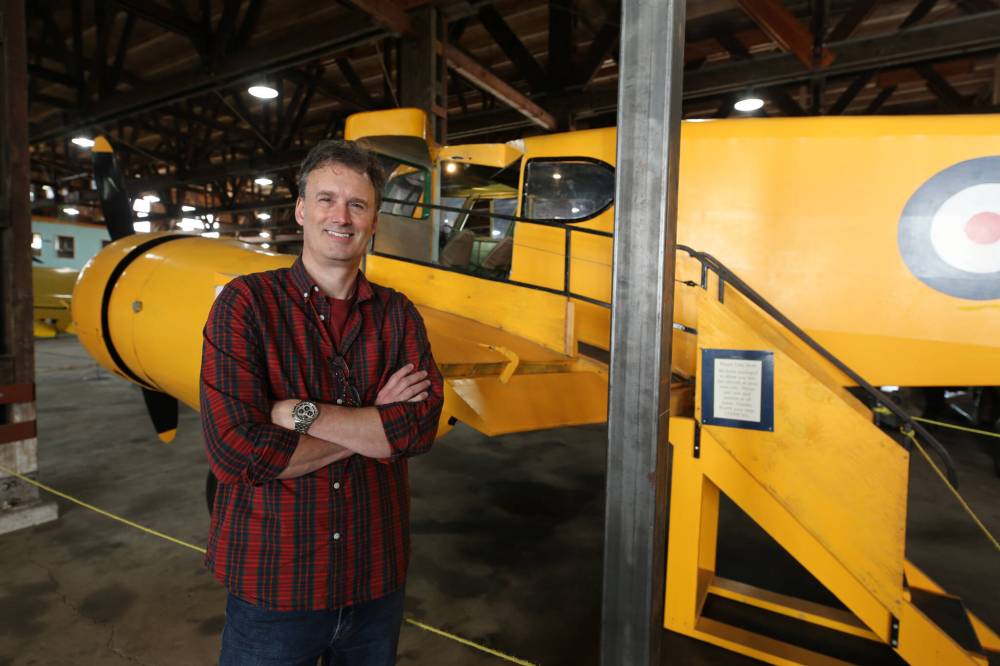‘Fresh look’ for air training museum
Advertisement
Read this article for free:
or
Already have an account? Log in here »
To continue reading, please subscribe:
Monthly Digital Subscription
$1 per week for 24 weeks*
- Enjoy unlimited reading on winnipegfreepress.com
- Read the E-Edition, our digital replica newspaper
- Access News Break, our award-winning app
- Play interactive puzzles
*Billed as $4.00 plus GST every four weeks. After 24 weeks, price increases to the regular rate of $19.00 plus GST every four weeks. Offer available to new and qualified returning subscribers only. Cancel any time.
Monthly Digital Subscription
$4.75/week*
- Enjoy unlimited reading on winnipegfreepress.com
- Read the E-Edition, our digital replica newspaper
- Access News Break, our award-winning app
- Play interactive puzzles
*Billed as $19 plus GST every four weeks. Cancel any time.
To continue reading, please subscribe:
Add Free Press access to your Brandon Sun subscription for only an additional
$1 for the first 4 weeks*
*Your next subscription payment will increase by $1.00 and you will be charged $16.99 plus GST for four weeks. After four weeks, your payment will increase to $23.99 plus GST every four weeks.
Read unlimited articles for free today:
or
Already have an account? Log in here »
Hey there, time traveller!
This article was published 31/03/2025 (202 days ago), so information in it may no longer be current.
BRANDON — When the doors open at the Commonwealth Air Training Plan Museum on Tuesday, visitors will be treated to new displays and stories about pilots who trained there to fight for the British Commonwealth during the Second World War.
The museum is one of the few remaining examples of the flying schools built across Canada to train Commonwealth pilots during the Second World War.
It’s a “fresh, modern look,” said Stephen Hayter executive director of the museum, located at Brandon Municipal Airport.

01042024 Andrew Hayter (from left) gives friends Mikayla Cox, Tyson Andrew and Jonas Kusmizkij a tour of the Commonwealth Air Training Plan Museum on Monday afternoon during a free open house for the grand reopening of the museum. The museum also celebrated the 100th anniversary of the Royal Canadian Air Force. Hayter’s father, Stephen Hayter, is the museum’s executive director. (Tim Smith/The Brandon Sun)
He said the large volume of material depicts what life was like for the trainees.
“When people think Second World War, of course they think training, pilots and fixing aircraft, but there’s also the social side, like dances,” he said.
“We also have some fascinating artifacts of sporting events, even a sweatshirt that a lady in the women’s division wore promoting No. 12 SFTS, which meant the No. 12 Service Flying Training School in Brandon.”
The service flying training school was important because it took the pilot into the next stage of training — flying a “much larger, twin engine aircraft,” Hayter said.
“They had to master those skills of flying something with that much power. Once they had mastered that, they would then start practising with whatever future bomber they were going to be flying, like a Halifax or a Lancaster.”
Brandon’s was one of about 200 training sites built across Canada. The grounds included a sentry box, dental and medical building, a chapel and several canteens, because they had to feed about 1,800 air personnel.
There are thousands of artifacts ranging from uniforms and medals to cameras and radios. The museum has collected nine vehicles from the late 1930s and ’40s, and a dozen historic aircraft, including six that are airworthy.
Those include the primary training airplanes — the de Havilland Tiger Moth, Fairchild Cornell, and the 1940 Fleet Finch that was restored last summer.
Hundreds of historical pieces are stored in the museum hangar, which is the largest artifact in the collection. It was built in the winter of 1940 and up and running by the summer of 1941, said Hayter.
“That’s the wonderful thing about the hangar, because it really sets the stage. You look up into the rafters and see the construction, and it’s such a great setting to tell the story, because it is part of the story,” he said.
The hangar is a national historic site of Canada. A federal government website says it was the first of 701 standard plan hangars built to support the training of aircrews from Canada and the Commonwealth.
The Canadian War Museum website says 131,533 pilots and aircrew were trained for the Allied war effort under the British Commonwealth Air Training Plan, which was “an agreement signed in December 1939 by Canada, Britain, Australia and New Zealand to train aircrew in Canada.”

Commonwealth Air Training Plan Museum executive director Stephen Hayter stands beside a metal beam installed as part of emergency structural work done on the museum’s Second World War-era hangar. The museum is scheduled to reopen this Sunday after being closed for eight months. (Colin Slark/The Brandon Sun)
“Nearly half of the pilots, navigators, bomb aimers, air gunners, wireless operators and flight engineers employed in all the Commonwealth air forces during the war were trained under the BCATP.”
Canada was chosen because of its vast open spaces. The program began on April 29, 1940, and was expanded after Nazi Germany invaded France a short time later and the Royal Air Force relocated several training schools to Canada from Britain.
In total, 72,835 of the BCATP’s graduates were Canadians.
Opening day of the aviation museum was specifically planned to coincide with school spring break and the Royal Manitoba Winter Fair, providing a “great opportunity for families who are in Brandon to come up and see us,” Hayter said.
“This is an important year; this is now 80 years since the end of the Second World War. And 80 years is an awful long time separating us from that history.
“It’s something amazing that Canada and Brandon did for the war effort, and we don’t want people to forget that. It’s something that we can be very proud of.”
The museum will be open seven days a week beginning Tuesday, from 1 p.m. to 4 p.m. From May until the end of September, the museum is open from 10 a.m. to 4 p.m.
— Brandon Sun



